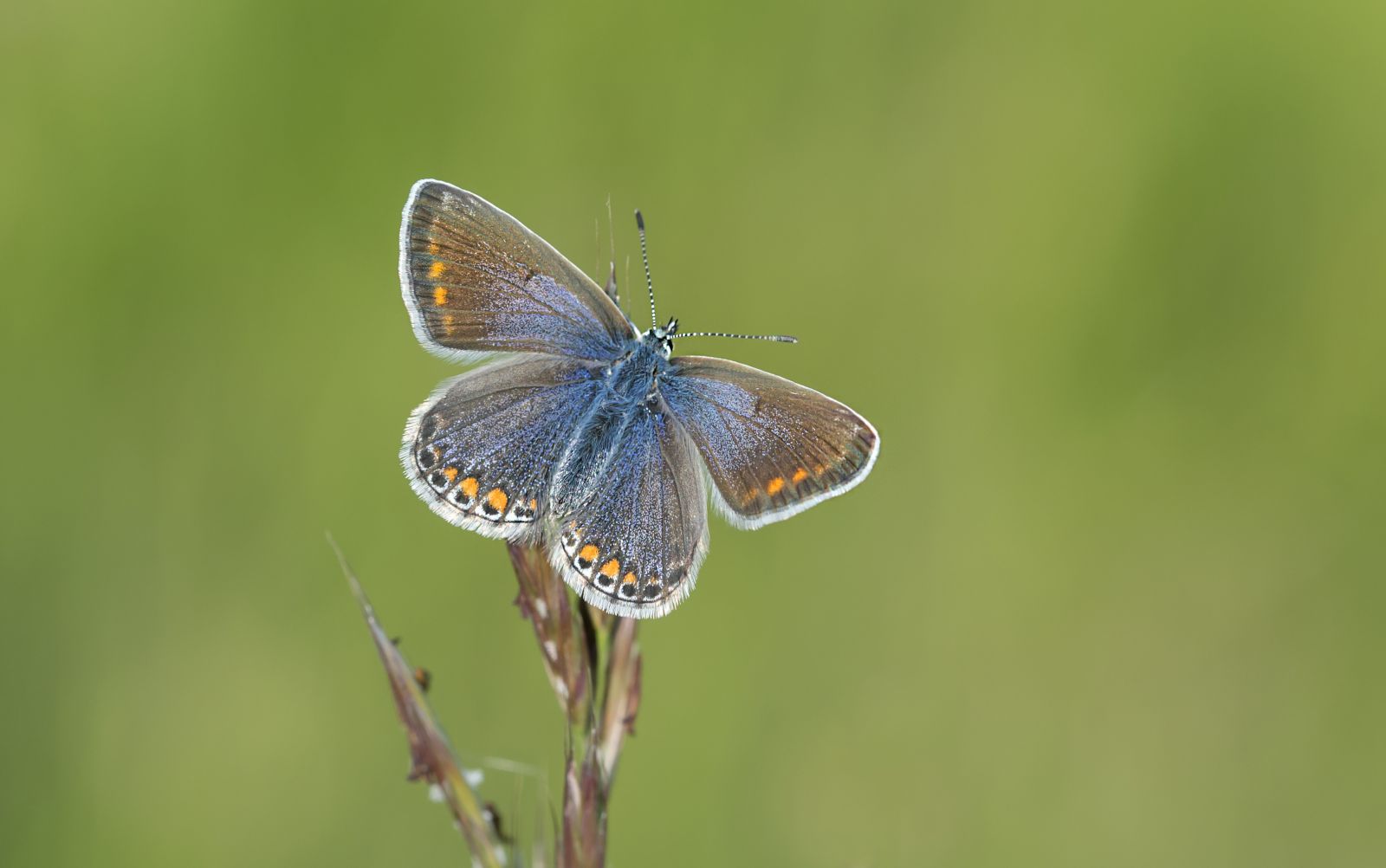Blue Butterfly boom
A beautiful blue butterfly which has been struggling for the last 40 years could be making a comeback, wildlife charity Butterfly Conservation can reveal.
The Common Blue is the most widespread of the UK’s blue butterflies and during the record-breaking hot weather in 2018, the butterfly’s numbers soared across the UK, increasing by 104% on the previous summer.
Now, with the country experiencing another heatwave and the Met Office forecasting above average temperatures throughout August, experts are predicting the Common Blue could see its best ever summer.
As part of this year’s Big Butterfly Count, Butterfly Conservation has teamed up with Campaign for National Parks to ask the public to look out for and record the Common Blue at the parks they work to protect across England and Wales.
The butterfly is not typically found in gardens, preferring unimproved grassland such as downland, woodland clearings, heathland and even sand dunes – all habitats that can be found across National Parks sites, like those in the New Forest, the Peak District and on the Pembrokeshire Coast.

Butterfly Conservation’s Senior Surveys Officer, Dr Zoe Randle, said: “People should be able to spot these butterflies in National Parks areas as their caterpillars mainly feed on the wildflower, Common Bird’s-foot-trefoil.
“In England last year, the butterfly’s numbers were up 110% from 2017 and in Wales their numbers were up 94% for the same period.
“However, numbers of the first brood which emerged in June were slightly down on last year, so it will be interesting to see how the second brood emerging in August will respond to the heatwave.
“It would really help us if people could get outside and look for this butterfly, so we can see if its fortunes really have turned around or if the Common Blue still needs our help.
“We’re also keen for people to keep recording any Painted Lady sightings, as this could be a record year for them – in just two days last week, people across the UK counted more than 30,000 Painted Lady butterflies and thousands more have been seen since then, so keep counting and we’ll reveal the total number after Sunday 11 August!”
Common Blue males have unmarked, bright blue upperwings, but females have orange crescents and dark spots near the outer edges on a ground colour that varies from purple-blue to dark brown, with a mere tinge of blue near to the body.
The underwings of both sexes have numerous black spots, with white halos and orange marks around the edges.
To celebrate Campaign for National Parks 70th anniversary, members of the public are being encouraged to look for the Common Blue and take part in the Big Butterfly Count across their parks.
Corinne Pluchino, Chief Executive of Campaign for National Parks said: “This is a great opportunity to help chart the progress of this beautiful blue butterfly and we’d love to know where our top Common Blue colonies are.
“We’d also like to have a better idea of the other butterfly species our sites are supporting, so please let us know what you find by taking part in the Big Butterfly Count.”
